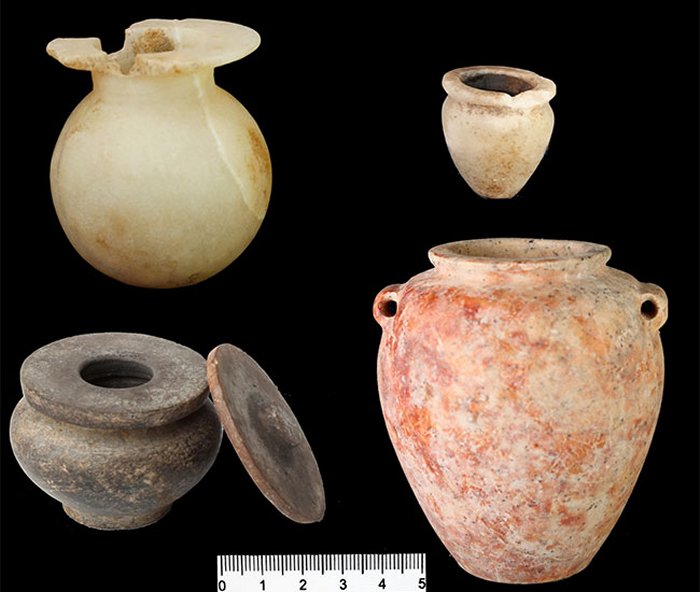Jan Bartek – AncientPages.com – Qubbet el-Hawa, also known as the “Dome of the Wind,” is a significant archaeological site situated on the western bank of the Nile, opposite Aswan. It serves as a burial ground for ancient nobles and priests from Egypt’s Old and Middle Kingdoms.

Three rock-cut tombs were found at the Qubbet el-Hawa necropolis. Image credit: Supreme Council of Antiquities – Image compilation: AncientPages.com
This necropolis was actively used from Egypt’s Fourth Dynasty through to the Roman Period, which is why archaeologists anticipate making intriguing discoveries during excavations there.
In a recent archaeological dig, an Egyptian mission uncovered three previously unknown rock-cut tombs from the Old Kingdom at Qubbet El-Hawa. This discovery provides valuable insights into burial practices during one of ancient Egypt’s most critical transitional periods.

Credit: Supreme Council of Antiquities
Preliminary studies indicate that some tombs were reused during the Middle Kingdom, highlighting Qubbet El-Hawa’s sustained significance as a major burial site over the centuries, according to Mohamed Ismail Khaled, Secretary-General of the Supreme Council of Antiquities (SCA).
“This is a significant scientific discovery that not only expands our understanding of the architectural and funerary traditions of the Old Kingdom but also highlights the cultural and economic shifts that occurred at the end of that era and into the First Intermediate Period,” asserted Khaled.

Credit: Supreme Council of Antiquities
The recently discovered tombs, though mostly undecorated due to the limited resources of their time, retain traditional elements such as burial shafts, offering tables, and funerary architecture. Mohamed Abdel-Badie, head of the Egyptian Antiquities Sector, provided further insights into these three tombs.
The first tomb includes an open courtyard with two false doors, offering tables, pottery vessels, and remnants of wooden coffins containing skeletal remains. A burial shaft in this courtyard revealed additional fragmented coffins and pottery inscribed with hieratic script from the Old Kingdom.

Credit: Supreme Council of Antiquities
Located west of the first tomb is the second one. Although it lacks inscriptions as well, it contained Middle Kingdom pottery and offering tables. Its architectural style indicates construction during the late Old Kingdom or early First Intermediate Period, before it was later reused.

Credit: Supreme Council of Antiquities
In contrast to the others in the layout is the third tomb near Ka-Kem’s renowned New Kingdom tomb. It housed a significant amount of well-preserved pottery and human remains, including those of children, suggesting its use during the Old Kingdom.
See also: More Archaeology News
This discovery underscores Qubbet El-Hawa’s significance as a key archaeological site in Upper Egypt. Situated on the Nile’s west bank opposite modern Aswan, this necropolis has historically served as a burial site for high officials and nobles while continuing to provide valuable insights into ancient Egypt’s political, social, and religious changes.
Written by Jan Bartek – AncientPages.com Staff Writer









